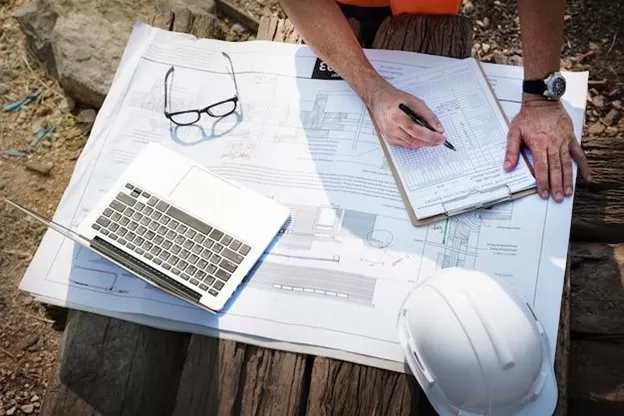Preconstruction is the foundation for any successful construction project. Yet, one of its most critical aspects—cost estimating—has long been fraught with inefficiencies and potential for error.
With tighter project budgets and timelines accelerating, the demand for accuracy and speed in the preconstruction process has reached new heights. Enter artificial intelligence (AI), a game-changing technology reshaping how cost estimating is approached in modern construction.
This blog explores how AI is transforming preconstruction, starting with the challenges of traditional cost estimating, moving into the innovative AI solutions available today, like those offered by Zebel, and concluding with actionable steps to adopt this technology for a competitive edge.
Traditional Cost Estimating Challenges and Limitations
Before addressing how AI is solving critical pain points, it’s essential to understand those challenges.
For decades, cost estimating has depended on manual processes, spreadsheets, and the experiences of skilled estimators. While these methods aren’t inherently flawed, they are slow, prone to human error, and struggle to scale with increasingly complex projects.
Common Issues in Traditional Estimating
1. Time-Consuming Processes
Estimators often spend countless hours compiling data from various sources, creating room for delays.
2. Risk of Human Error
Even the most seasoned professionals can miscalculate projections, leading to budget overruns or underestimated costs.
3. Limited Data Utilization
Spreadsheets are great for small-scale projects, but when handled manually, they rarely accommodate comprehensive data sets or reflect emerging trends.
4. Difficulty in Collaboration
Teams working off separate systems or files encounter version-control issues, causing delays and discrepancies.
These limitations impact the accuracy of project forecasts and can have cascading effects on scheduling, resource allocation, and overall project profitability.
AI-Powered Solutions in Cost Estimating
Artificial intelligence has entered the preconstruction space, promising to tackle these challenges head-on. But what makes AI uniquely suited for cost estimating? It’s all about leveraging predictive technology and real-time data to simplify what was once a tedious and error-prone process.
Key AI Capabilities
Data Collection and Analysis
AI-powered systems can ingest vast amounts of data from project histories, market trends, material costs, and labor rates. This capability provides more reliable insights compared to traditional methods, which often rely on limited datasets.
Predictive Modeling
Using machine learning algorithms, AI can evaluate past project outcomes to predict costs with exceptional accuracy, even for complex builds.
Automation of Repetitive Tasks
Routine activities such as quantity takeoffs or inputting pricing data can now be automated, freeing estimators to focus on higher-value tasks.
Dynamic Simulations
Advanced AI models allow teams to simulate various scenarios—such as fluctuating material prices or delays in procurement—so they can explore low-risk alternatives.
With AI in play, estimators shift from reactive problem solvers to proactive strategists, significantly enhancing their role in preconstruction.
Benefits of AI in Modern Cost Estimating
Why should firms integrate AI into their preconstruction workflows? The answer lies in the three primary advantages AI provides—accuracy, speed, and comprehensive analysis.
1. Accuracy
AI thrives on large datasets and precision algorithms, resulting in cost estimates that are significantly more accurate than manual calculations. With real-time external data factored in, such as market fluctuations in material prices, AI minimizes the risk of underestimating or overestimating costs.
2. Speed
Traditional cost estimating can stretch over weeks, stretching project timelines. With AI automating data entry and processing, cost estimates can be generated in hours (or even minutes), enabling teams to respond faster to proposals and RFIs.
3. Comprehensive Analysis
AI systems offer in-depth insights that were previously out of reach. For example, they can analyze labor productivity, forecast supply chain risks, or suggest cost-saving material alternatives.
These benefits not only streamline preconstruction processes but also build a level of confidence among stakeholders by reducing uncertainties.
The Future of AI in Preconstruction
While AI has already made significant inroads into cost estimating, the technology is far from reaching its full potential. What does the future hold?
- Integration with BIM (Building Information Modeling): Future AI systems will seamlessly integrate with BIM platforms, allowing estimators to work with dynamic 3D models and receive real-time feedback on costs.
- Enhanced Transparency: AI development is moving toward improved explainability, offering users a clear view of how estimates are derived.
- Ethical AI Practices: The emphasis on fairness and bias reduction will ensure the technology is as ethical as it is efficient.
- End-to-End Automation: Advances in AI could automate the entire preconstruction process, from bid preparation to scheduling and resource planning.
AI is no longer a luxury for construction firms—it’s rapidly becoming a necessity for those looking to remain competitive in an increasingly data-driven industry.
Conclusion
The role of AI in preconstruction, particularly in cost estimating, marks a paradigm shift that no modern business can afford to ignore. By offering unmatched accuracy, operational efficiency, and strategic insights, AI empowers firms to deliver projects on time and within budget—all while unlocking new growth opportunities.
If you’re ready to integrate AI into your preconstruction workflow, there’s no better time to start. Explore the tools and platforms available today, invest in the right solution for your business needs, and position yourself for long-term success in a rapidly evolving industry.

